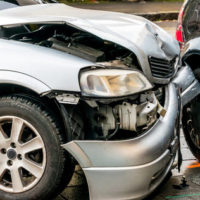Three-Car Crash Kills One

A 67-year-old man died after a multi-vehicle crash that occurred near the intersection of Rio Mar Drive and U.S. Highway 1 in Port St. Lucie.
According to witnesses and the Florida Highway Patrol, a northbound driver on U.S. 1 tried to make a left turn against traffic onto Rio Mar. In so doing, her Kia Optima crossed directly into the path of an oncoming Oldsmobile minivan. The minivan struck the Optima’s passenger side. A third car, a Buick Lucerne, was trailing the Oldsmobile and was unable to stop before slamming into the wreckage. The Oldsmobile driver was rushed to a nearby hospital with serious injuries, where he was later declared dead.
Authorities say they may press charges against one or more of the drivers.
Liability in Car Crash Cases
Whenever more than one vehicle is involved in an intersection collision, there is usually more than one driver who was at least partially at fault, and the above story is no exception.
- The Kia driver apparently made a dangerous turn that was probably illegal under the traffic code,
- The Buick driver may have been following at an unsafe distance, and
- The Oldsmobile driver may have had the last clear chance to avoid the wreck (a legal theory that is discussed below).
The first two drivers may be liable because of the negligence per se (negligence “as such”) rule, which holds that drivers who violate safety statutes are responsible for car crash damages as a matter of law. In Florida, it is illegal to both follow too closely (Florida Statute 316.0895) and pull out in front of another car (316.1925).
To win a negligence per se claim, the victim must also establish legal causation, or foreseeability. In the above crash, either the Buick or the Kia could have caused the Oldsmobile driver’s death, as the latter vehicle was sandwiched between the other two. Most likely, the jury would assign liability to the party that it determined to be mostly responsible for the crash, since it is foreseeable that one car crash might cause another one.
This rule comes to us from Palsgraf v. Long Island Railroad, a case in which a railroad owner was held not responsible for the victim’s injuries because they were too remote from the negligent act. In this case, a passenger jostled by two negligent employees dropped a package of fireworks, and the shock wave from the resulting explosion knocked a pair of scales onto the victim.
Dividing Liability in Car Crash Cases
All these things are incredibly complicated, so rather than assigning all fault for all damages to one driver, the jury often divides fault between two or more drivers, a process that’s called contributory negligence.
Florida is a pure comparative fault state, so the judge divides damages according to the percentage of fault. In the above case, if the jury determines that the victim was 20 percent at fault and the Kia driver was 80 percent at fault, the victim would receive 80 percent of the requested damages.
The victim could be partially at fault because of the last clear chance rule mentioned above. If a driver has an opportunity to safely avoid a car crash, perhaps by changing lanes or stopping suddenly, an otherwise-negligent driver is not responsible if the victim fails to act.
A legal theory like last clear chance is usually the best way to promote a contributory negligence defense, because such theories are easy for the jury to follow.
Go With Aggressive Attorneys
Intersection collisions usually raise complicated legal issues. For a free consultation with an experienced personal injury lawyer in Port St. Lucie, contact Eighmie Law Firm, P.A. Home and hospital visits are available.
Resources:
nycourts.gov/reporter/archives/palsgraf_lirr.htm
palmbeachpost.com/news/breaking-port-lucie-man-killed-car-crash/5F9YWqXE8xc8GsN0sgYOrN/
